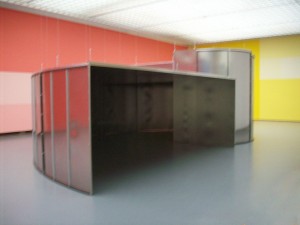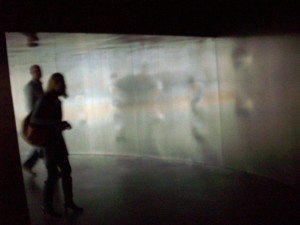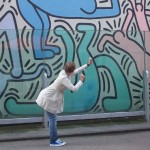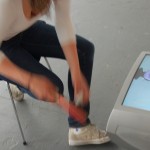Visited Pisa's leaning tower first, of course. Climbing its stairs had a strange effect on…
Carsten Höller at Boijmans


Carsten Höller at Boijmans: of course I had to be there. No slides this time – it was a nautilus shape that grabbed my attention. One wanders inside, the thrill of finding out how far one can go in, knowing there must be an end to it, but having no visual clue. Going on exploring with the hands when the eyes fail. Then noticing that the structure isn’t as solid as it looks: it is suspended from the ceiling and moves ever so slightly. Disorientation and slight dizzyness. Which is intended all along …
Text from the interview shown at the entrance of the exhibition:
Ranti Tjan: In this exhibition ‘Divided Divided’ you give the public the title. Apparently as an invitation to visit the exhibition. Is this a conscious choice?
Carsten Höller: Yes, because I always work on a title a long time. I like it when the title doesn’t explain, but sets you on a track and makes you think. Each work is divided differently. Some works are only halved. Some are divided into many entities, or following the concept that you take a half, take half of that half, and so on. So there are different ‘levels’, one can approach the work in different ways. Halving it is just one of the possibilities. One can come here with a predisposition for arithmatics and try to understand the logarithm’s of the spiral we have hung here. But don’t feel pressured. It is enough to go inside and feel the minimal vibrations it has because the spiral doesn’t touch the ground. This influences the perception that jou have of yourself. Which is called ‘proprioceptie’. Which is about how jou position yourself in space. It is not only based on visual information, but also on how your brain works inside. Nobody really knows how it works. It is like a sense that keeps you upright, keeps you from falling. Even if the room that you are in starts to move, you don’t move with it. This is different with children of say age 2 to 3. They are completely dependant on visual information, and they would fall if the walls moved. What is interesting in the ‘spiral’ is that you still have visual information that influences you. It is so subtile that jou don’t realise it, exept when you touch the walls. You feel immediately that there is something not right. I like the moment when something that you take for granted loses its ground. One has find out what it is all about all over again. Something that for a long time you thought you had solved . Habits that have become fixed, that you have had for the longest time. Not just the foundations of how you behave in a social context, but also how you think about yourself. If that can be shaken, I am very happy!
That is why I adopted ‘play’: to create the circumstances under which one can rethink the ‘me’ .
| « My linen closet | <-- previous post | next post --> | Linen closet live » |
|---|








